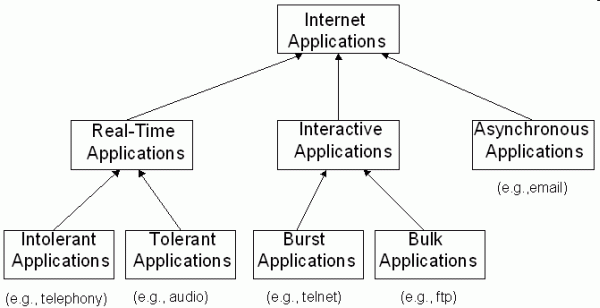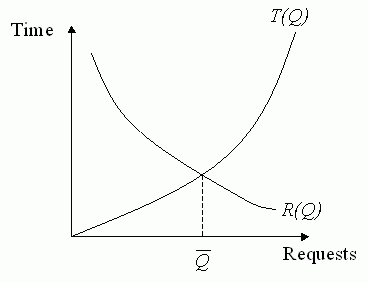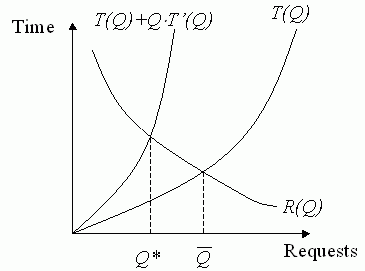

Internet Congestion and Pricing
An Overview
|
|
Prof. David Bernstein
James Madison University
|
|
|
The Graduate Reading Forum
|
|
James Madison University
|

Overview


- The current Internet service model
- Offering different levels of service
- Pricing of service levels
- Pricing Internet congestion
Current Service Model


- Applications are given "Best Effort" service
- All applications receive the same level of service
Hidden Levels of Service


- The Situation:
- You buy a T3 connection (45mbps)
- Your normal requirements are 15mbps
- You sell 30mbps but give yourself priority
- The Result:
- There are two levels of service
Categorizing Existing Applications


Corresponding Levels of Service


- One Approach: Shenker (1995)
- Firm Delay Bounds
- Loose Delay Bounds
- Best Effort 1
- Best Effort 2
- Best Effort 3
- Other Approaches are Possible
Offering Different Levels of Service


- The Result:
- People will mark everything high priority
- Possible Fixes:
- Precedence Pricing (Bohn et al., 1994)
- Packet Auctions
- Smart Markets (MacKie Mason and Varian, 1995)
Precedence Pricing


- The Idea:
- The government sets precedence numbers for different
applications
- The Criticisms:
- Increased regulation
- Maintenance difficulties (as applications change)
Packet Auctions


- The Idea:
- Each packet has a "bid" field
- Packets are processed in order of bid
- Users are charged the bid
- The Criticisms:
- Users will tend to underbid
Understanding Packet Auctions


- Assume:
- Two packets
- Each packet can have a different "value" or
willingness-to-pay
- Notation:
-
wi
denotes the maximum
willingness-to-pay
for packet i
-
bi
denotes the bid of
pay for packet i
-
xi
denotes the excess value
of packet i
Understanding Packet Auctions (cont.)


- Excess Value:
- Expected Excess Value:
Understanding Packet Auctions (cont.)


- Packet 2's Solution:
- Making Them Both Happy:
Smart Markets


- The Idea:
- Packets are processed in order of bid
- Users are charged the capacity-clearing price
- The Criticisms:
- Cost of micro-transactions
- Might require packet sampling
- Accounting problems (IP addresses aren't people)
Understanding Smart Markets


- Excess Value:
- Expected Excess Value:
Pricing Internet Congestion


- Some Observations:
- The demand for Internet services depends on the
time required to process requests
- The performance of the system depends on the
number of requets
- The Result:
- The Internet is over-used
Pricing Internet Congestion (cont.)


- Notation:
-
T denotes the service time function
-
R denotes the inverse request function
Pricing Internet Congestion (cont.)


Pricing Internet Congestion (cont.)


- Comparing the Optimum and Equilibrium:
Pricing Internet Congestion (cont.)


- About the Comparson:
- The Internet is over-used
- Pricing can fix it
Conclusions


- There are several arguments for Internet pricing
- Proper pricing may require complicated mechanisms
- Internet applications may need to include pricing logic
There's Always More to Learn






















